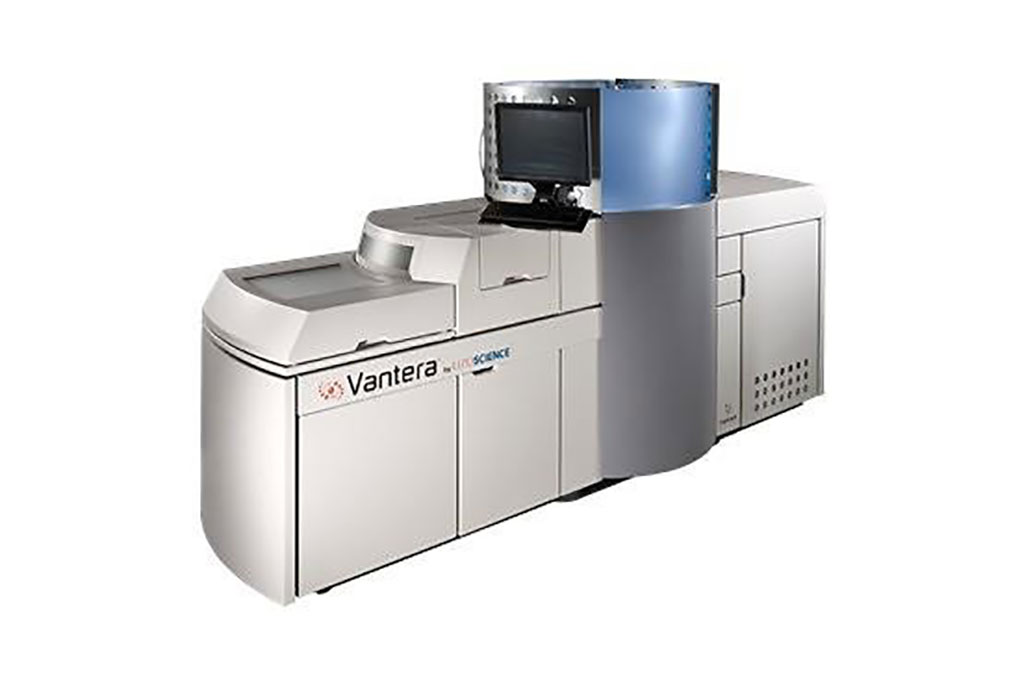NMR-Based Method Measures Circulating Blood Citrate Levels
By LabMedica International staff writers
Posted on 31 Mar 2021
Recent studies show that citrate is involved in several biological processes such as inflammation, cancer, insulin secretion, acetylation of histones, neurological development and hydroxylglutaric aciduria, indicating that it has functions beyond energy regulation. Posted on 31 Mar 2021
Citrate associations with glaucoma, non-alcoholic fatty liver disease (NAFLD), bone disease and mortality have been observed. Monitoring circulating citrate could potentially be a diagnostic tool. While at present, urinary citrate is commonly used as a risk factor in kidney stone formation, serum/plasma citrate is scarcely utilized for disease diagnosis or prognosis.

Image: The Vantera Clinical Analyzer based on nuclear magnetic resonance (Photo courtesy of Liposcience)
Laboratorians at the Laboratory Corporation of America Holdings (Labcorp, Morrisville, NC, USA) took blood samples from volunteers in Greiner tubes allowed to clot (30 minutes) in an upright position and centrifuged (3,000 rpm, 10-15 minutes) immediately after clotting. Samples collected into plain red-top tubes and BD Gel Barrier serum tube (Becton Dickinson and Company, Franklin Lakes, NJ, USA) were held upright (red-top tubes for 45 minutes; BD Gel Barrier tubes for 30 minutes) at room temperature to clot and were promptly centrifuged.
Sample preparation (i.e., 1:1 (v/v) dilution of serum or plasma with phosphate buffer) was performed automatically on the Vantera Clinical Analyzer (Liposcience, Raleigh, NC). One-dimensional 1H NMR spectra were collected on a 400 MHz spectrometers at 47 °C. WET was used to suppress the water signal. The total acquisition time for each spectrum was 48 seconds. The NMR instruments are calibrated using 15 mM trimethyl acetic acid as a calibrator and reference standard to verify instrument performance on a daily basis. A restricted region of the collected spectrum, where the four citrate resonances appear, was used for quantification. To determine if the assay has adequate sensitivity to measure clinically relevant concentrations of citrate, the assay was used to quantify citrate in 533 apparently healthy adults, and in the general population (n=133,567).
The team reported that the limit of quantification (LOQ) for the assay was determined to be 1.48 mg/dL. Linearity was demonstrated over a wide range of concentrations (1.40 to 4.46 mg/dL). Coefficients of variation (%CV) for intra- and inter-assay precision ranged from 5.8-9.3 and 5.2-9.6%, respectively. Substances tested did not elicit interference with assay results. Specimen type comparison revealed <1% bias between serum and plasma samples, except for heparin plasma (3% bias). Stability was demonstrated up to eight days at room temperature and longer at lower temperatures. In a cohort of apparently healthy adults, the reference interval was <1.48 to 2.97 mg/dL. Slightly higher values were observed in the general population.
The authors concluded that the newly developed NMR-based assay exhibits analytical characteristics that allow the accurate quantification of clinically relevant citrate concentrations. The assay provides a simple and fast means to analyze samples for clinical and other studies. The study was published on March 18, 2021 in the journal Practical Laboratory Medicine.
Related Links:
Laboratory Corporation of America Holdings
Becton Dickinson and Company
Liposcience













